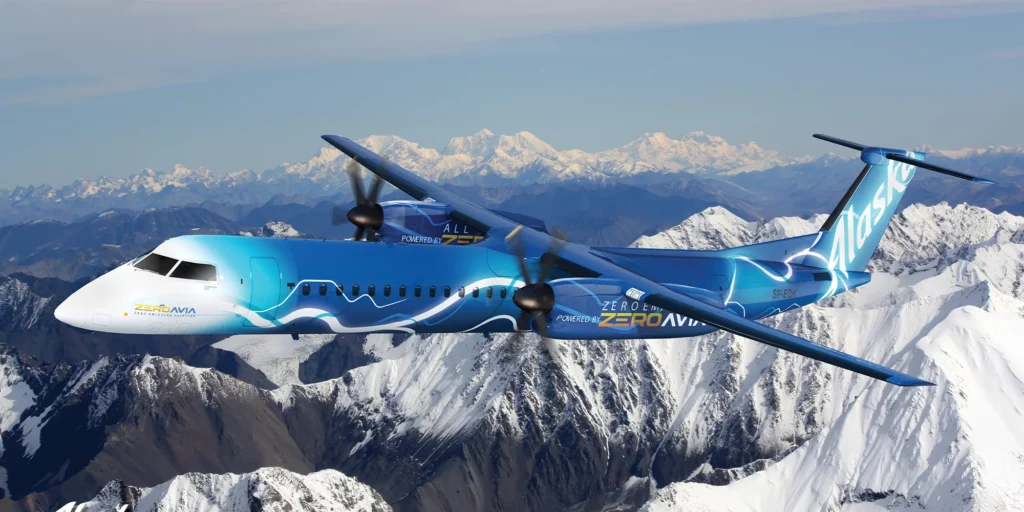Hydrogen-electric aviation pioneer, ZeroAvia has announced a landmark agreement with Flyshare, Inc., operating under the banner of Air Cahana, to deliver 250 zero-emission ZA2000 engines.
ZeroAvia’s hydrogen-powered engines will bolster Air Cahana’s regional air services in California and the broader West Coast, putting sustainable flight at the forefront of its operations.
Hydrogen fuel produces approximately three time the energy of traditional kerosene-based fuel and as much as 60 times that of battery-powered engines, making it an increasingly popular alternative in the aviation sector’s sustainability efforts.
Air Cahana, based in Los Angeles, is the maiden airline entirely dedicated to reducing the carbon footprint of the aviation industry. The airline’s flight services will kick off by harnessing Sustainable Aviation Fuels (SAF), progressing towards zero-emission propulsion technology upon its arrival in the market.
Hydrogen fuel
ZeroAvia’s cutting-edge powertrain relies on hydrogen fuel cells to generate electricity, thereby powering electric motors that ensure virtually emission-free flights. Air Cahana aims to propel turboprops using ZeroAvia’s innovative zero-emission power systems, thus ushering in an ecologically responsible era of aviation.
The collaboration strengthens the likelihood of zero-emission commercial flights crisscrossing metropolitan areas on the West Coast and beyond within the next five years.

“Launching a new airline is not a small challenge, but Air Cahana has an enormous advantage and can unlock a new market by being the earliest to realize the enormous operating savings and zero-emissions benefits of hydrogen-electric engines,” James Peck, Chief Customer Officer at ZeroAvia, said in a statement.
“By embracing this groundbreaking technology, we are making an unwavering commitment to eliminating airline emissions and dramatically reducing operating costs,” said Tony Thompson, CEO of Air Cahana.
According to Thompson, ZeroAvia’s extensive flight testing and in-house IP around core technologies, offers the airline “the perfect alliance” to achieve its vision to become the cleanest airline in the sky.
“Together, we are poised to revolutionize the aviation industry, setting a new standard for a greener sky and delivering an unparalleled passenger experience,” he said.
In May, ZeroAvia partnered with Alaska Airlines to retool a decommissioned 76-seat Q400 aircraft to create the largest zero-emissions plane in the world. ZeroAvia also introduced its 1.8MW multi-megawatt modular electric motor system — a state-of-the-art motor that plays a critical role in making hydrogen fuel cell engines for larger aircraft possible.
The announcement also follows the release of a recent survey that shows 60 percent of passengers are willing to pay more for green air travel. Additionally, 70 percent of consumers polled said they trust sustainable aviation fuel alternatives to conventional airline fuel.
Aviation’s climate impact
Aviation is a significant contributor to climate change, accounting for approximately 2.5 percent of global carbon dioxide emissions as of 2019, according to the International Council on Clean Transportation (ICCT). This figure is expected to rise significantly if the sector continues on its current trajectory, with the International Civil Aviation Organization (ICAO) projecting a threefold increase in aviation CO2 emissions by 2050.

If the aviation industry were a country, it would be the sixth-largest carbon emitter, surpassing Germany. CO2 emissions only represent part of aviation’s climate impact. Contrails and contrail-induced cirrus clouds, formed by aircraft at high altitudes, also contribute to planet warming.
One study found that aviation-induced cloudiness contributes to an estimated 50 percent of aviation’s total radiative forcing — a measure of changes in energy in the atmosphere due to greenhouse gases.
Nitrogen oxides (NOx) produced by aircraft engines also contribute to the formation of ozone in the lower atmosphere, a potent greenhouse gas. The ICAO (The International Civil Aviation Organization) estimates that aviation-related NOx emissions were responsible for around 14 percent of all human-induced ozone production in 2020.
Related on Ethos:


